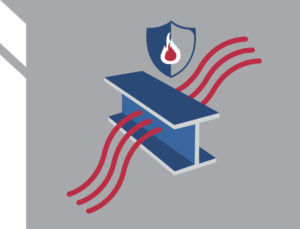How Fire-Resistant Is Your Structure?
Light gauge steel buildings enjoy some of the same benefits as pre-engineered steel buildings. However, there is a major difference between the two types of steel construction: their reaction to fire.
Structural Collapse Concerns
According to the National Fire Protection Association (NFPA), firefighters respond to a structural fire every 64 seconds in the U.S. 
Occupants and responding firefighters become trapped when structures collapse. In fact, an estimated one-third of firefighter fatalities result from structural collapses.
Consequently, the longer a structure resists structural failure in a fire, the greater the chance for firefighters to rescue victims— and escape injury themselves.
Wood Buildings and Fire
Lightweight wood-framed buildings burn fast and hot. In fact, wooden roof trusses can reach the catastrophic failure point in as little as four minutes after fire involvement, according to retired fire Chief Gary Bowker.
Unfortunately, recent studies find engineered wood framing members fail even faster than dimensional lumber.
Light Gauge Steel Buildings and Fire
The International Building Code designates all steel framing as noncombustible. Nevertheless, fire quickly heats up cold-formed steel framing. The collapse of the ultrathin framing follows swiftly— and without warning.
Stephen Higgs, in an article in Fire Rescue Magazine, says, “What does that mean for us? We have NO time! Once the fire is flashed in [the room of fire origin], the container can no longer hold, absorb or contain the heat. As fire enters combustible lightweight voids, collapse is imminent.”
Higgs recommends firefighters cool the steel framing with adequate amounts of water from a protected position before entering any section of burning cold-formed steel buildings. That is not good news for anyone in the building awaiting rescue.
Red Iron Steel Buildings and Fire
Pre-engineered steel buildings employ heavy-duty steel framing. Although these commercial grade steel structures are not fireproof, they do resist failure far longer than cold-formed steel buildings. Only at temperatures exceeding 1,100° F does commercial grade steel begin losing its structural integrity.
Building Fire Safety Starts with Steel
Insurance companies further attest to pre-engineered steel buildings’ fire resistance. Most carriers offer substantial discounts to commercial grade steel building owners, based largely on the fire-resistant qualities of the steel system.
Discover all the advantages of building with RHINO Steel Building Systems. Call RHINO now at 940.383.9566 with questions about light-gauge steel construction or details of upcoming building projects. Our experienced metal building specialists are here to serve you.
